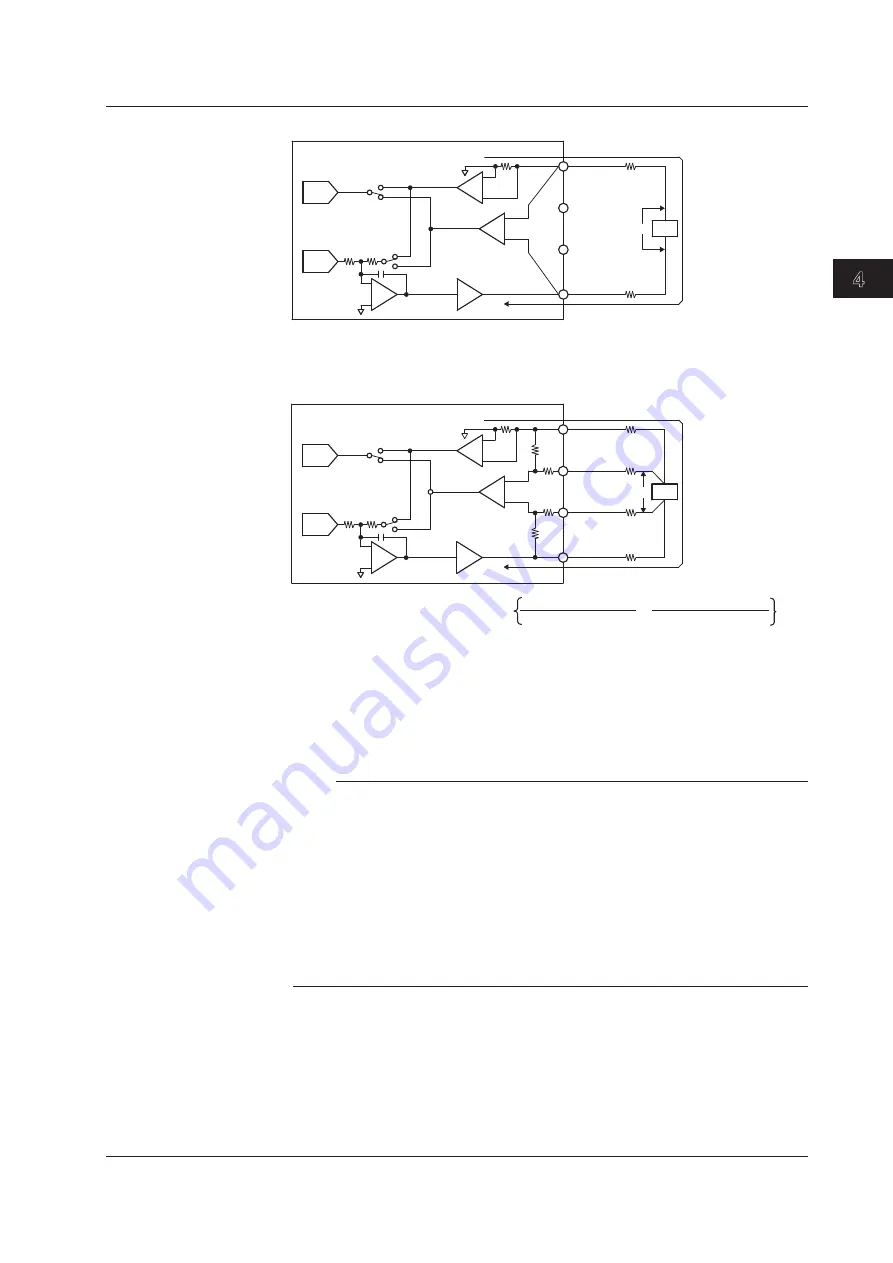
3
2
1
4
5
6
7
8
9
10
11
12
13
14
15
16
17
18
App
Index
Two-terminal connection
Four-terminal connection
GS820
ADC
Source
DAC
R1 R2
Power Amp
Vsns
Current
Sense
Rs
Voltage
Sense
OUTPUT Hi
SENSE Hi
SENSE Lo
OUTPUT Lo
r2
r1
DUT
Vd
Id
-
+
-
+
-
+
ADC
Source
DAC
R1 R2
Power Amp
Vsns
Current
Sense
Rs
22
22
Voltage
Sense
OUTPUT Hi
SENSE Hi
SENSE Lo
OUTPUT Lo
r2
r1
DUT
Vd
Id
−
+
−
+
−
+
r3
r4
GS820
1 MΩ
1 MΩ
r1 to r4: Lead wire resistance
Id:
Current flowing through the DUT
Vd:
Voltage applied to the DUT
Vsns: Voltage sensed by the GS820
(= voltage source value and measured current value)
A difference of Id × (r1 + r2) appears across Vd and Vsns.
This difference cannot be ignored if Id is large
even if r1 and r2 are small.
A difference of
appears across Vd and Vsns, but this difference can be ignored
if r1 to r4 are small.
Id ×
+
r
1
. (r
3
+ 22
Ω
)
1 MΩ + r
3
+ 22 Ω
+ r
1
r
2
. (r
4
+ 22 Ω
)
1 MΩ + r
4
+ 22 Ω
+ r
2
Note
• If 4W (four-terminal connection) is used, the source voltage across the OUTPUT Hi and
OUTPUT Lo terminals will be larger than the voltage generated on the load. If the source
voltage across the OUTPUT Hi and OUTPUT Lo terminals exceeds the source range, the
GS820 will not be able to generate the voltage correctly, and abnormal load detection may
be activated causing the output to be turned OFF. Be sure that the source voltage across
the OUTPUT Hi and OUTPUT Lo terminals do no exceed the source range.
• To prevent oscillations due to stray capacitance and lead inductance, use twisted-pair lead
wires to connect to the OUTPUT Hi and OUTPUT Lo terminals. Likewise, use twisted-pair
lead wires to connect to the SENSE Hi and SENSE Lo terminals. In particular, wire the
lead wires short in the case of a high-capacity load in a four-terminal connection in voltage
source mode.
<<Corresponding Command Mnemonic>>
[:CHANnel<n>]:SENSe:REMote 1|0|ON|OFF
4.5 Selecting the Wiring System (Remote Sense or Local Sense)
4-7
IM 765601-01E
Common Setup
















































